The Irresistible Lure of Zagreb, Croatia
Small Tours Reveal a Gem of a City
Article and photos by Lies Ouwerkerk
Senior Contributing Editor
3/30/2019
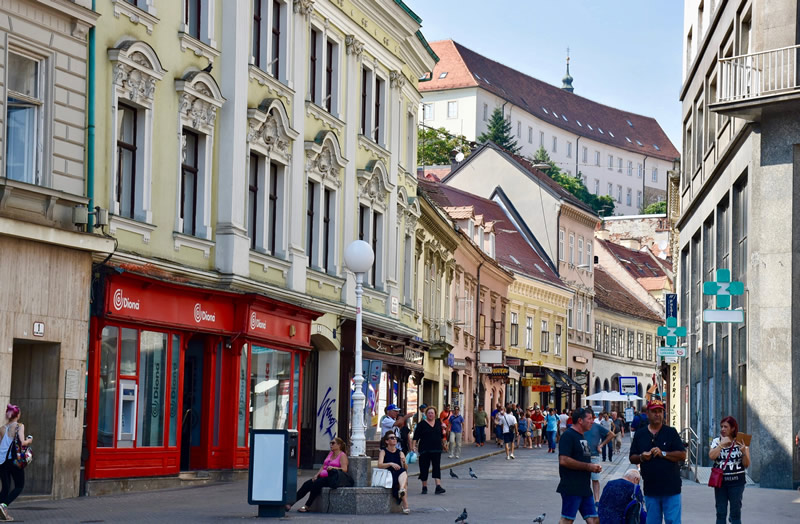
|
|
The lively streets of Zagreb, Croatia.
|
The Irresistible Lure of Zagreb, Croatia
Say “Croatia,” and what may come to mind are the stunning beaches, crystal-clear waters, beautiful sunsets, and vibrant nightlife along the Adriatic Coast. Or you may imagine picturesque islands, historic jewels like Dubrovnik and Split, famous wines, local craft beer, meat stews, and fresh seafood. But what about the lesser-known capital Zagreb, a few hours' drive inland?
If it had not been for a wedding invitation in the region, I would probably never have known that Zagreb is one of the most lively and diverse small-scale cities imaginable. The city offers old world charm mingled with utilitarian and modernist architecture. You will come across underground tunnels, courtyards, and gas lamps; abundant street art, leafy parks, and outdoors festivals; museums, theaters, and concert halls; cozy taverns and bistros offering excellent food and superior local wines; and, above all, super-friendly, laidback Croats who make ample time for their daily coffee ritual in the numerous cafes and sidewalk terraces all over the city.
Who would ever have guessed that going out on Friday nights and sleeping in on Saturday mornings is passé? Dressing up and people watching between 10:00 AM and 2:00 PM at Zagreb’s markets and cafes on Saturdays is all the rage today!
Transport
Zagreb is a compact and walkable city of over one million people.
From the airport, a bus leaving from outside the air terminal and arriving at Zagreb’s main bus station costs just 30 kuna (US$4.75), payable by cash to the bus driver. From there, I walked to the city center in about 10 minutes. But you can also hop on one of the iconic blue trams that have been running through the city for more than a century.
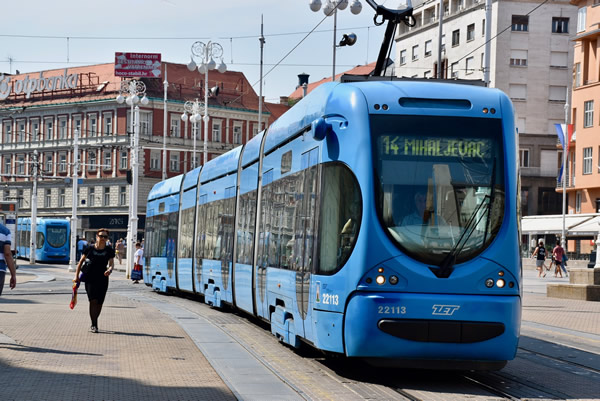
|
|
The blue trams of Zagreb.
|
For maps, routes, prices, and points of sale check out zet Zagreb.
Hospitality
Accommodations in Zagreb are wide-ranging, from expensive 5-star heritage hotels to cheap youth hostels. Many locals also rent out affordable rooms and apartments. During my stay in the city, I lived in a stylish, spacious studio apartment, right downtown, for US$40 per night, including my own private entrance, a kitchen, and a bathroom. As a bonus, my welcoming and helpful hosts lived on another floor in the same building and became my best sources of information.
See: Airbnb, VRBO, and Sabbatical Homes.
History
Zagreb’s history began with two settlements on two neighboring hills, one called Gradec or Upper Town, a center of Croatia’s aristocracy and tradesmen, the other Kaptol, a center of Croatia’s Catholic Church. For centuries, rivalry existed between these two towns. Gradually the two towns merged and became known as Zagreb, capital of Croatia, under the Austro-Hungarian Empire (until 1918). In the 19th century, Zagreb grew into an important mercantile and craft center, and the population mushroomed. Railway links to Vienna and Budapest were built and the city’s cultural and economic life started to blossom, resulting in more aristocratic housing, public buildings, theaters, monuments, and parks.
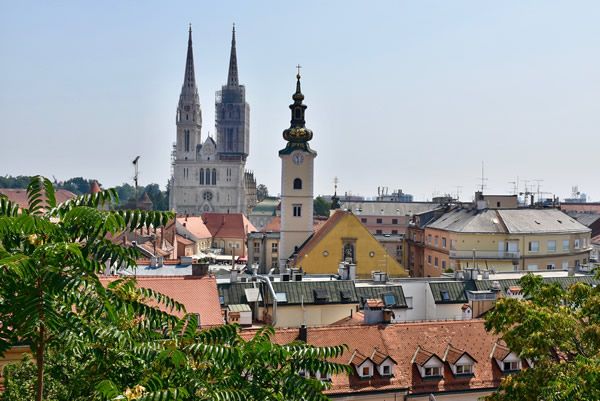
|
|
The two-spired Cathedral in Kaptol.
|
Under Tito’s former Yugoslavia, from the 1940s until 1980, Zagreb became second to Belgrade in importance, but after the political crises of the 1980s and early ’90s, and the breakup of Yugoslavia into independent states, Zagreb was once again capital of the State of Croatia. Croatia was admitted to the European Union in 2013. The currency is still the kuna (one kuna = US0.16 cents).
Architecture
Zagreb’s architecture boasts a variety of styles, from Gothic (the Cathedral and St. Mark’s church, both built during the 13th century) to Baroque (Museum of Naïve Art), introduced by Jesuits in the 17th century, to Art Nouveau (Art Pavilion and mansions of the wealthy surrounding the eight squares of the "Green Horseshoe Park" built in the years around 1900). These elaborate styles contrast starkly with the functionalist structures and concrete utilitarian apartment buildings of the mid-20th century (Novi Grad), and modern creations such as the Museum of Contemporary Art, completed in 2009, and the new terminal of Franjo Tudman airport, inaugurated in 2017.
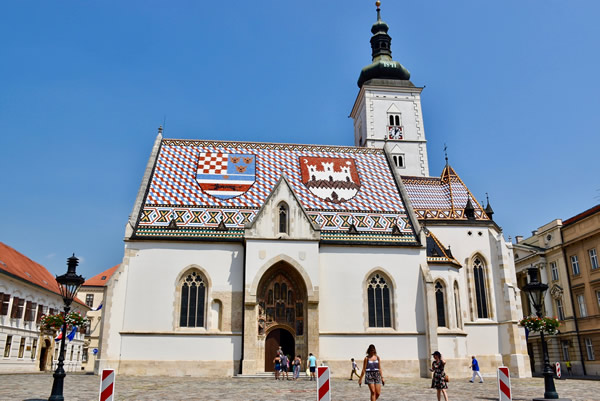
|
|
St. Marks church, with in its mosaic tiled roof, the coats of arms of Zagreb (white castle in red background) and of the kingdom of Croatia, Slavonia, and Dalmatia.
|
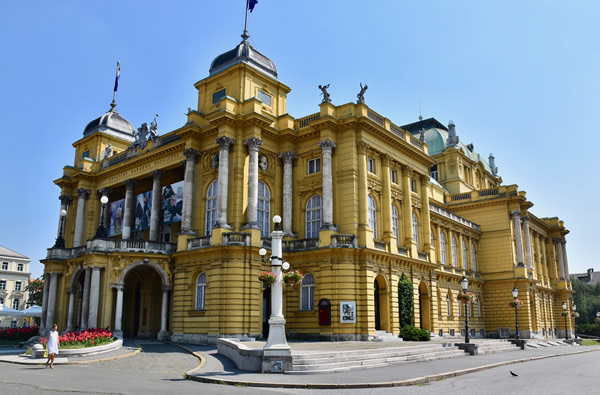
|
|
The 1895 Neo Baroque National Theatre, Zagreb's theatre, opera, and ballet house.
|
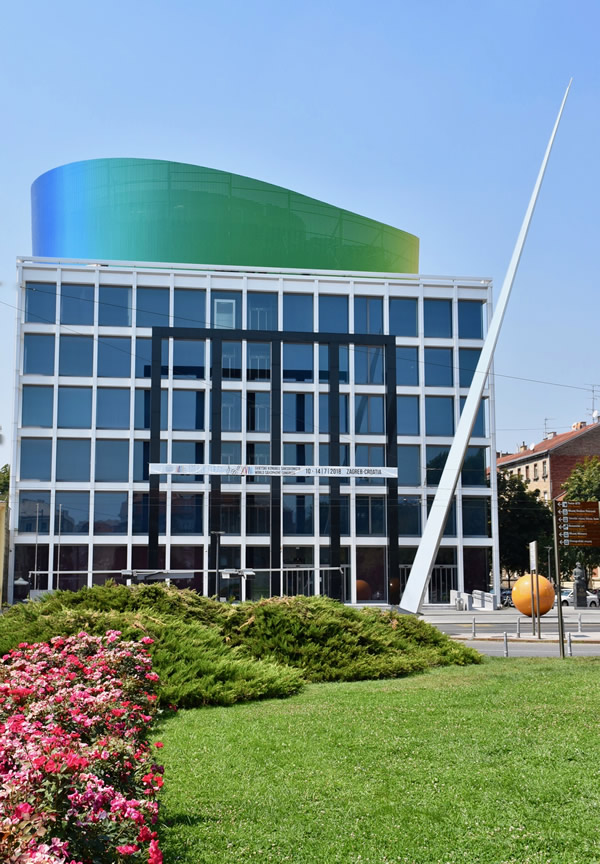
|
|
The Academy of Music, the oldest musical institution in Croatia (1829), today in a new building (2014) with roof in colors of the rainbow.
|
Green Zagreb
To enjoy your downtime, there are plenty of parks in the city. The already mentioned Green Horseshoe or Lenuci Horseshoe, named after the 19th-century urban planner Milan Lenuci, stretches from the city center to Zagreb’s central railway station, connecting several atmospheric squares and parks, including the Botanical Garden at the far end, with its collection of more than 5,000 plant species.
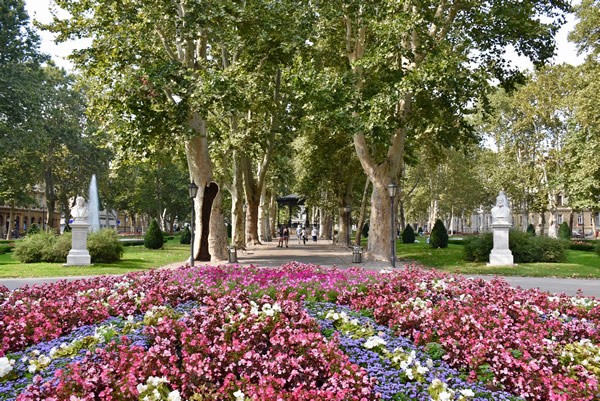
|
|
Green Horseshoe Park.
|

|
|
Green Horseshoe Park with Art Pavilion (1898) in the background.
|
Other impressive parks include Maksimir with its five lakes and zoo. Jarun is the largest park of the city with several walking and cycling trails, with pebbled beaches and cafes along its lake. Bundek is in Novi Zagreb. Smaller green spaces can be enjoyed within the city center, such as Zrinskoc, Strossmayer Promenade, and Opatinova.
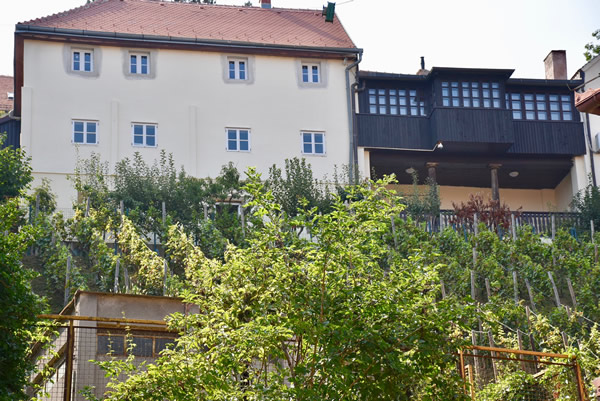
|
|
There are a lot of vineyards just around Zagreb; this small one on Radiceva street is the only surviving vineyard in the middle of the historic center.
|
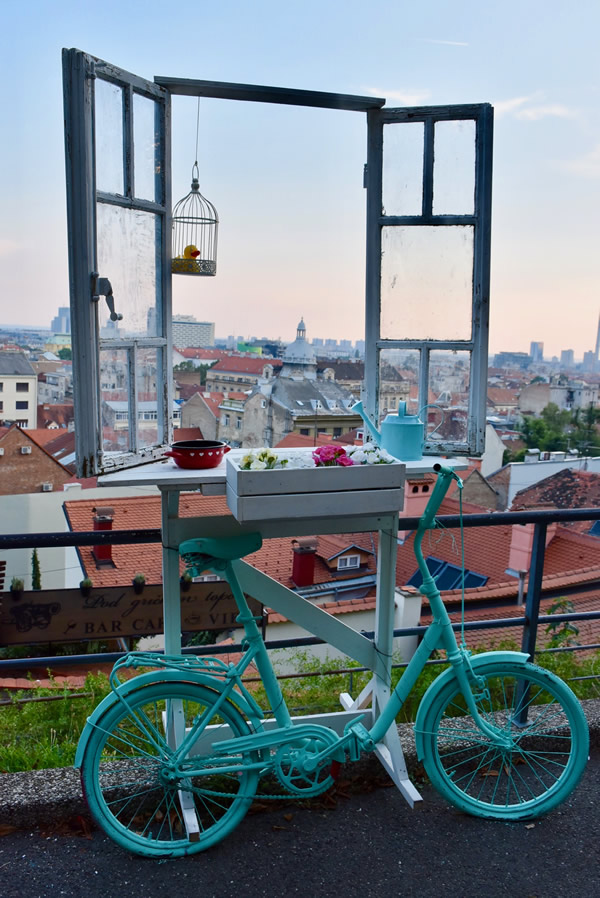
|
|
Walking along romantic Strossmayer Promenade, also called "Strossmartre" is the best place for panoramic views of Zagreb and the occassional art installation.
|
In Ribnjak Park behind the Cathedral, it was especially lovely to unwind from my wanderings through Gradec and Kaptol. Mirogoj Cemetery, the burial ground of many well-known Croatian politicians, writers, and artists, with its arcades and open-air sculpture park, is also beautiful. Finally, nature park Mount Medvednica is a popular hiking destination with marked hiking trails and huts to rest.
Museums
There are many museums in Zagreb to choose from:
-
Zagreb City Museum (Zagreb’s urban development from prehistoric times until present day)
-
Archeological Museum
-
Technical Museum (objects related to technology and transport)
-
Museum of Broken Relationships (a bit overrated, but a still interesting enough collection of artifacts, letters, and souvenirs of doomed liaisons)
-
Art Pavilion
-
Museum of Arts and Crafts
-
Museum of Contemporary Art (from the mid-20th century onwards)
-
Mimara Museum (collection of old masters donated by Ante Topic Mimara, also dubbed “the Master Swindler of Yugoslavia”)
-
Zagreb’s street art--spread all over the city--should not be missed!
A variety of sites provide more information about Zagreb’s many museums and galleries, including those listed above.
Meeting Locals
To experience Zagreb through the eyes of locals, I met various English-speaking Croatians on lesser-trodden paths via Airbnb or in their own homes for dinner through EatWith.com. These encounters were for me the absolute highlights of my stay in Zagreb!
On my first day in the city, I joined Luka, guide at "Free Spirit Tours" to get my bearings, together with a group of other visitors. Almost every day of the year, Luka meets his following at 11:00 AM at the horse statue of Ban Jelacic on Zagreb’s Main Square, and guides them along the city’s most important points of interest, all the while spicing up his tour, in his signature voice, with historical facts, humorous anecdotes, interesting legends, and local recommendations. This 2½-hour walk is free of charge, but a tip at the end is appreciated.
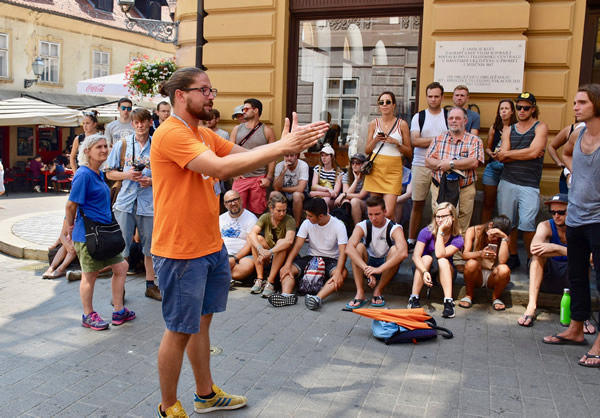
|
|
Luka, from "Free Spirits Tour" explaining the history of Gradec and Kaptol.
|
"Free Spirits" also offers paid tours such as the "Zagreb Croatian Homeland War Tour," with a focus on the fall of Communist former Yugoslavia and Croatia’s fight for independence, a wine tasting tour at Zagreb’s oldest wine bar, a beer tasting tour in a brewery, and a food tasting tour including local specialties.
With Jelena, owner of the new wine bar and boutique Pupitres and the only female sommelier in town, I had a private tapas and wine tasting session, focusing on local wines from small wine producers in Istria, Dalmatia, Slavonia, and the Croatian Uplands. Besides being a well-informed and animated teacher, Jelena — originally from Bosnia, but uprooted to Croatia during the war of the early 90’s — also had a lot of interesting personal information to share, which made our meeting all the more meaningful.
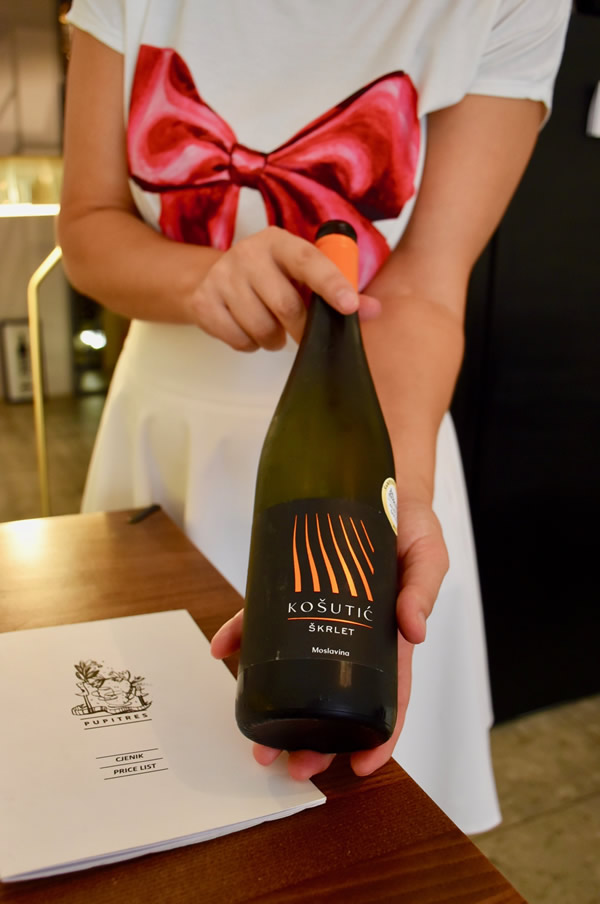
|
|
Jelena from wine boutique 'Pupitre' shows a bottle of her excellent Croatian wine selection.
|
I met Nidzara, a former tourist guide and today owner of the pop-up vintage online shop "Mango Sticky Rice Vintage" for a walk along farmers markets, vintage clothing shops, traditional restaurants, and wine bars.
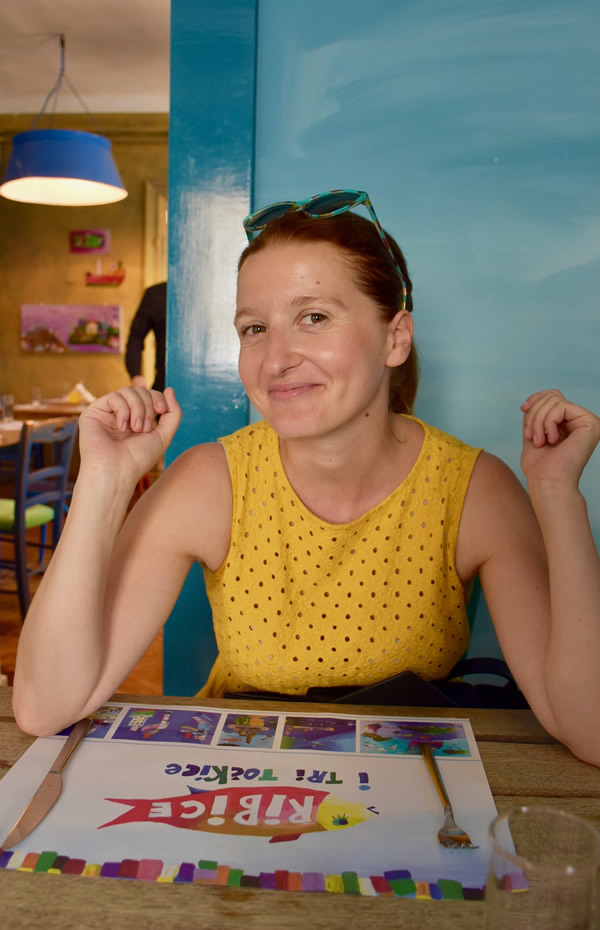
|
|
Nidzara from "Mango Sticky Rive Vintage".
|
We started our walk at the unpretentious café and patisserie Orijent, founded in 1934, and reportedly still the best-kept secret in town for ice cream. We walked over to the nearby-open farmers market Kvatric, where we visited "Ilocki Podrumi Vinoteca" which carried local wines and notorious spirits such as rakija and travarica. The fishmongers' section offered surprisingly fresh scampi, tuna fish, and calamari. We then passed through a Gligora diary shop with numerous international award-winning cheeses originating from the Croatian island of Pag, where they had aged in pressed wine grapes, olive skins and cherry skins.
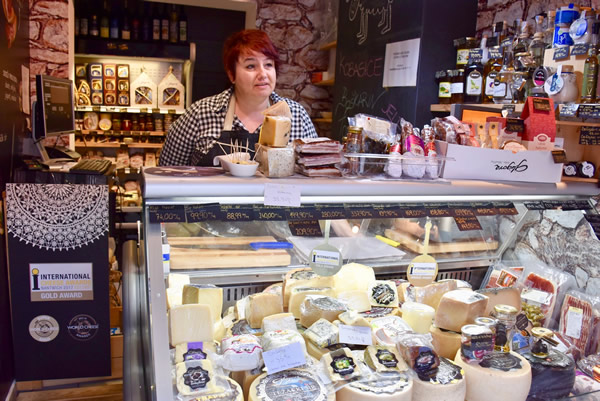
|
|
Winning Gligora cheeses at Kvatric market.
|
At the famous Dolac Market, decked out with colorful parasols against the scorching summer sun, we learned from one of the friendly kumicas (women from nearby farming villages who traditionally sell their fresh produce at the market) how to prepare the famous punjena paprika (stuffed pepper) and the traditional sarma (stuffed sauerkraut).
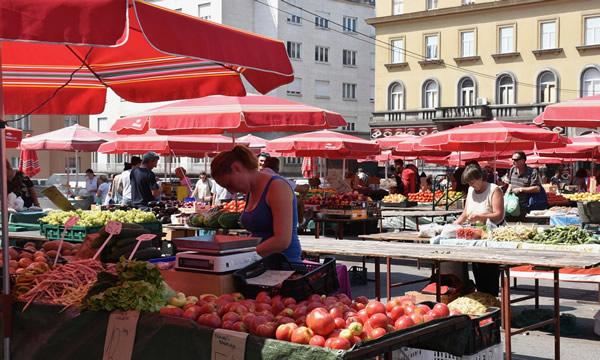
|
|
Dolac market.
|
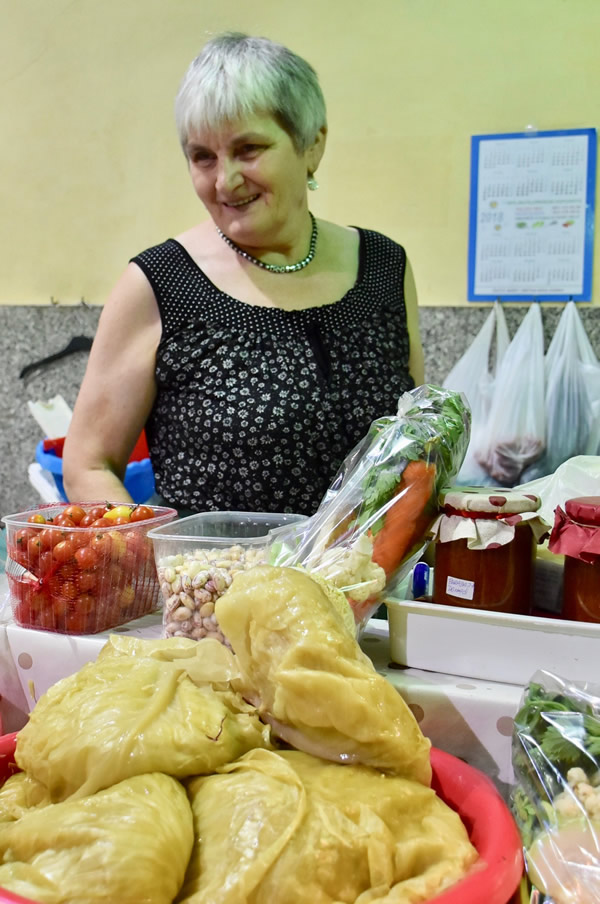
|
|
One of the friendly kumicas in Dolac market.
|
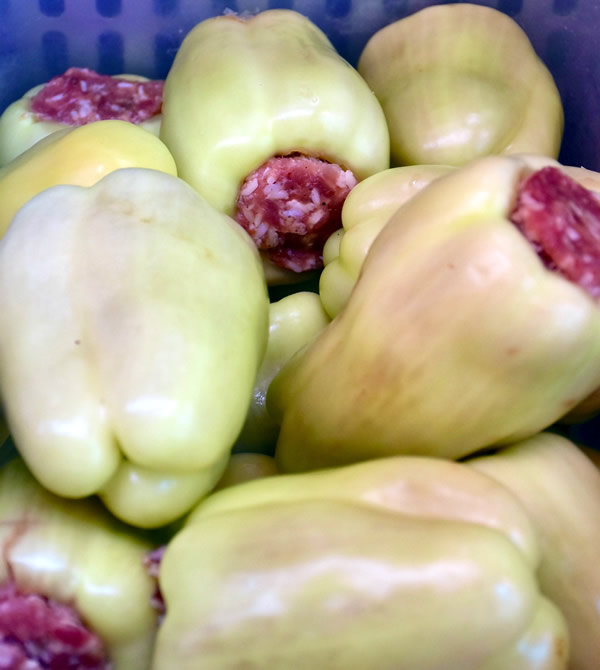
|
|
Stuffed peppers (punjena paprika).
|
For lunch, Nidzara had chosen a fish restaurant with the name Ribice I Tri Tockice, which offered great food and welcoming, knowledgeable service. We feasted on crispy, lightly fried gavuni (smelts, originally a quick lunch for fishermen, eaten whole), served with warm bread, olives, tartar sauce, and a glass of dry white Malvazija, the oldest indigenous grape produced in Croatia. Many works of the famous Croatian painter Vjekoslav Voje Radoicic adorned the walls. Traditional southern Croatian klapa music was playing in the background. Klapa is a local version of "a capella", a style dating back to 19th century Dalmatia, and on the list of UNESCO Intangible Cultural Heritage of Humanity since 2012. The combination of the traditional food and drink, hospitality, music, and the complementary themes in the more modern works of art made for a very special visit.
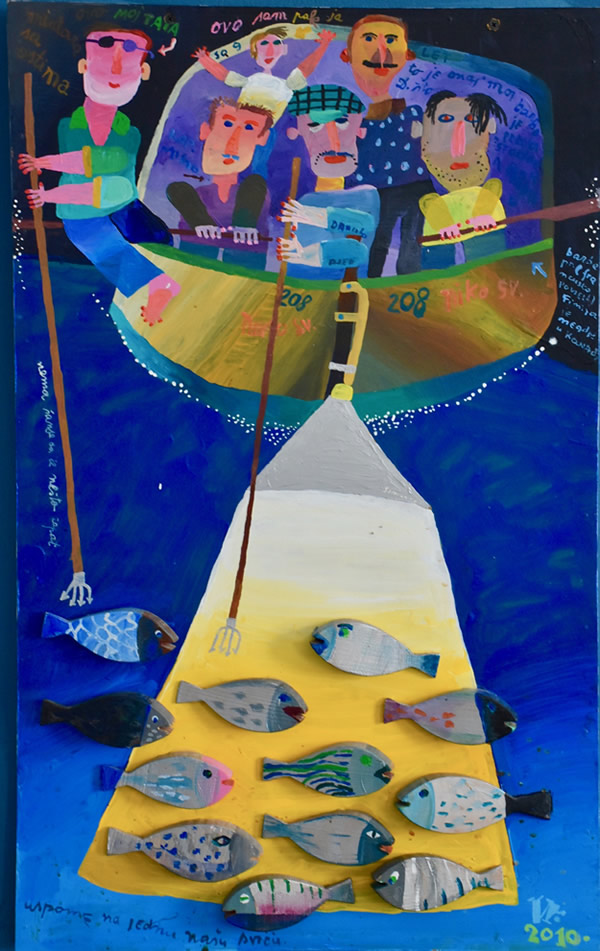
|
|
Painting by famous Vjekoslav Voje Radoicic, depicting a fishing trip of the painter when he was a little boy, in the company of his grandfather.
|
Via some vintage clothing stores around the Main Square, we topped off our tour with a sweet dessert wine at Vivat Fina Vina (site temporarity down), a “vinoteca for wine lovers” on Marticeva Ulica.

|
|
Tasting a dessert wine with the owner of 'Vivat Fina Vina'.
|
Nidzara also organizes a "Communist Tour", a "Sweet and Sticky Tour" through vintage Croatian pastry shops, an "Arts, Cinema, Parks, and Retro Bars Tour", and a "Picnic at a Castle Tour". Nidzara can be reached at mangostickyricevintage@gmail.com or tel. 00385912545833.
There are other ways to discover Zagreb through the eyes of a local, including riding a bicycle with Bike Tours Zagreb, and on foot with the great storytellers of Secret Zagreb.
Street Food
A delicious traditional Zagreb dish is strukli, a pastry filled with salty or sweet cheese (nuts, honey, or berries added optionally). The best place to enjoy it is at "La Struk" on Skalinska ulica. Even more popular is burek, a savory pastry made from filo dough and filled with feta and cream cheese, spinach, or meat. Sweet burek versions with apple or berries also exist. Another great yet simple national dish is cevapi: minced meat served in a flatbread, together with chopped onions, and cheese cream kajmak. Try it while paying a visit to "Kitchen & Grill PLAC" at Dolac Market!
The place to taste and buy all kinds of Croatian street food is "Heritage" on Petrinjska ulica. And for a coffee at an atmospheric retro café, head for "Caffe Bar Finjak", located in a courtyard at Vlaska ulica, or "Bistac", in the beautiful Croatian National Theatre.
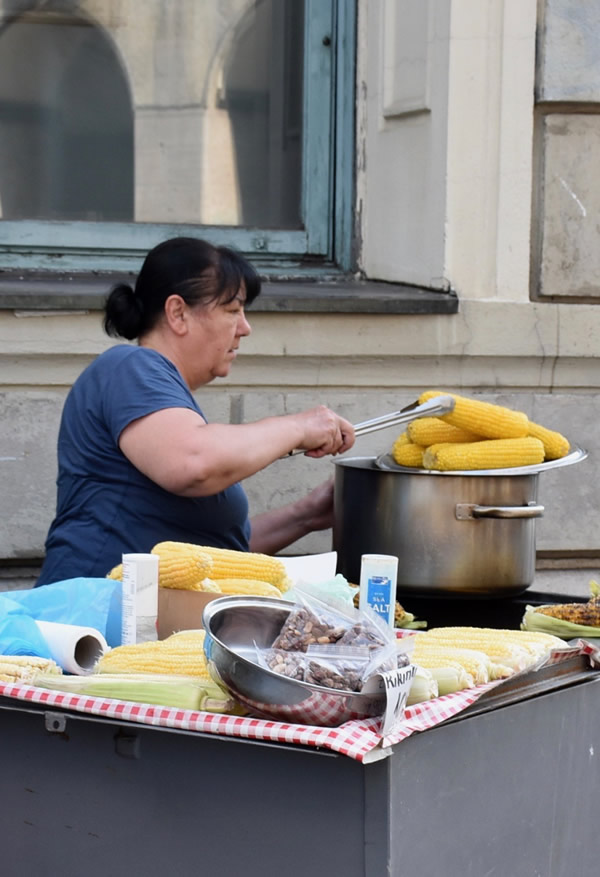
|
|
Street food vendor.
|
Finally, there are many nightlife options, especially on pedestrian-only, café-lined Tkalciceva ulica, or “craft beer lane” Opatinova ulica. For those hungry during all-nighters, Bistro Dolac at Dolac Market is open 24 hours.
Festivals
Zagreb boasts numerous festivals and cultural events, including international film festivals, the international street festival "C’est is d’best", concerts in various churches and the Cathedral, the INmusic festival at Lake Jarun, and the international folklore festival in the fall. For a full listing of events, see the Visit Croatia and CitiPal Zagreb.
NB: "Dvorista" (courtyards) festival is unique! For ten days in July, visitors get a sneak peek into otherwise closed courtyards of Upper Town Zagreb, and can mingle with locals while enjoying food, drinks, and live music.
Christmas aficionados may want to check out celebrations and markets in December.
Out of Town
Day trips can be made by public transport from Zagreb to surrounding cities such as Samobar, Krapina, and Varazdin. For organized tours to these cities or surrounding wine areas, or to the Plitvice Lakes, Ljublijana, Lake Bled, Split, Zadar, and Istria peninsula, see the following tour operator sites and search for Zagreb: Get Your Guide, Roundabout, and Viator.
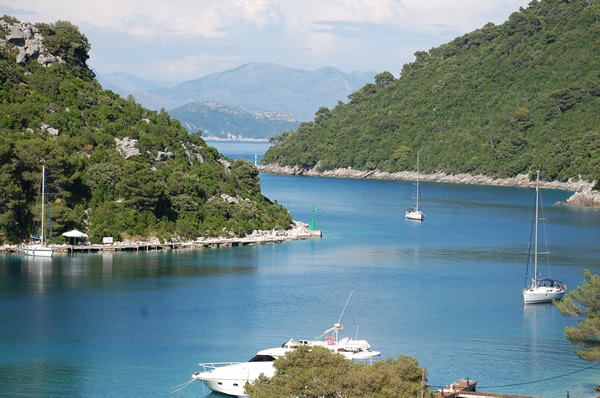
|
|
The Adriatic Coast is about 250 km from Zagreb.
|
Credits
Two prolific bloggers contributed considerably to putting Zagreb on my travel radar: Anja Mutic, who also writes for BBC Travel, the Washington Post, and the New York Times and is originally from Croatia, and Andrea Pisac, who defines herself as a "global anthropologist and Zagreb writer with a twist." In partnership with the Zagreb Tourist Board, they edit a newsworthy and playful publication called 30 stupnjeva, available at the Tourist Office on Zagreb’s main square or with a download from Zagreb for You.
Lies Ouwerkerk is originally from Amsterdam, The Netherlands, and currently lives in Montreal, Canada. Previously a columnist for The Sherbrooke Record, she is presently a freelance writer and photographer for various travel magazines.
|
